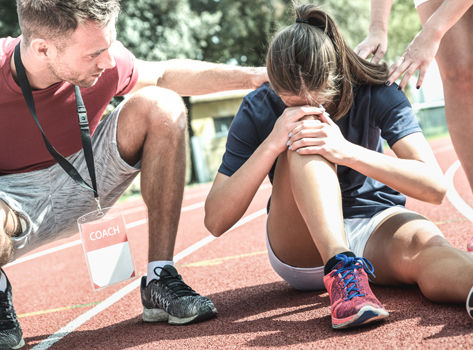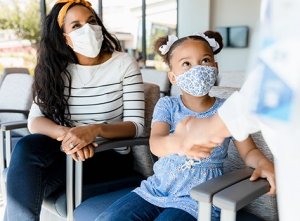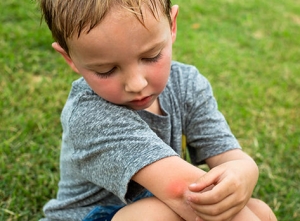
It’s hard to know the severity of an injury when it happens. Young children and teenagers may feel pain initially, but will often shrug it off to keep playing. It’s important that parents and coaches tell children it’s OK to take a break from activities if they’re hurting. Hitting the pause button is a chance to assess the injury, evaluate the child’s pain level, and make an informed next decision.
“Our culture can sometimes lead children and adolescents to believe they should play through pain,” says Shazad Shaikh, MD, an orthopedic surgeon and sports medicine physician at Atlantic Health System. “Children and adolescents take their cues from mom, dad, coaches, older siblings -- any strong influence in their lives. So, it’s important for adults to teach children early on that if they’re hurt, it’s wise to take a break, rest and recover, and even seek professional advice or treatment when needed.”
When an injury does happen, make sure your child stops playing immediately and doesn’t push through pain. Take these steps instead:
1. Begin R.I.C.E.
To manage an injury in the early stages, you can help relieve pain and swelling by following this simple formula: Rest, Ice, Compression, Elevation. You can also support your child’s pain level and inflammation with an over-the-counter pain medication as prescribed.
2. Call your doctor.
Orthopedic surgeons and sports medicine physicians can thoroughly evaluate your child’s injury. They may take X-rays or obtain advanced imaging to determine what structures have been affected -- bones, ligaments, tendons, cartilage, or muscles. They’ll also guide your child through rehabilitation and recovery.
3. Work towards clearance.
Getting medical clearance to return to sports or activities will only come once your child can perform specific activities without pain, and their muscle strength and mobility has fully returned.
“Sprains and strains, broken bones, and concussions are the most common injuries we see in active children and adolescents,” says Dr. Shaikh, who explains that if a child pushes through an injury such as a stress fracture, it will become more serious and painful. If a concussion isn’t acknowledged, a second injury can mean longer recovery and more severe symptoms. If a sprained ankle is ignored, it can lead to long-term joint weakness or chronic ankle instability. Here are a few tips to avoid injury from the start.
1. Wear preventive equipment, properly.
Your child’s helmet should fit snugly and be buckled properly. Shoes should be sized correctly and tied tightly to avoid extra stress on the legs and hips. Depending on the activity, consider a chest protector or wrist and elbow guards.
2. Warm-up, stretch and condition.
Before any activity, children should warm up, so their body is ready for action. Agility training and conditioning also help to balance the body’s strengths and weaknesses.
3. Avoid overuse.
Playing multiple sports or activities is the best way to avoid repetitive motion injuries. Rather than single-sport activities year-round, encourage cross training for overall fitness, with a little down time built in too.
4. Stay hydrated.
Take water breaks especially during intense physical activity. Water helps prevent muscle fatigue, headaches and even heat stroke. It also helps the body recover from injury by flushing out toxins and minimizing muscle tension and soreness.
“The potential complications of playing injured should not be underestimated,” says Dr. Shaikh. “An untreated injury can have many consequences on young, developing bodies, so it’s important that minor injuries are treated swiftly and properly to avoid future issues.”
Be Proactive About Your Health
An untreated injury can have consequences on young bodies. An orthopedic surgeon or sports medicine physician can help evaluate and treat childhood athletic injuries.
Related Articles
Your Healthy Summer Guide
Atlantic Health System is your healthy summer guide to a safe and fun season. From helpful tips to preventive and urgent care, we've got you covered for whatever summer brings.
5 Ways to Play It Safe at Summer Camp
Camp activities come with safety precautions. Here are five ways your little camper can play it safe while away from home.
How to Be Better Prepared at a Child’s Sporting Event
In professional sports, trained personnel are ready to respond if there’s a medical event. But what about at your child’s sporting events? Here, we share some easy ways to prepare in case of a health emergency.
Help! Where Should I Take My Child for Care?
Unexpected accidents and illnesses happen all the time – so make sure you know where to go when a health emergency strikes.
Three Common Summer Skin Rashes in Kids, What You Need to Know
Childhood rashes from plants, bugs and infections are common during summer months -- and kids tend to scratch the itch, often unknowingly. Here’s how to prevent and treat three common rashes and make sure they don’t become something more.
Preparing Your Child for Summer Camp
Kids create memories that last a lifetime during summer camp. Follow these tips to help keep your child’s summer safe, healthy, and happy.





